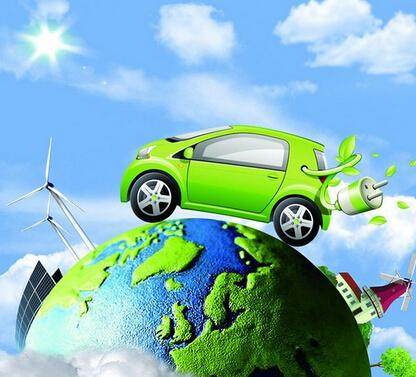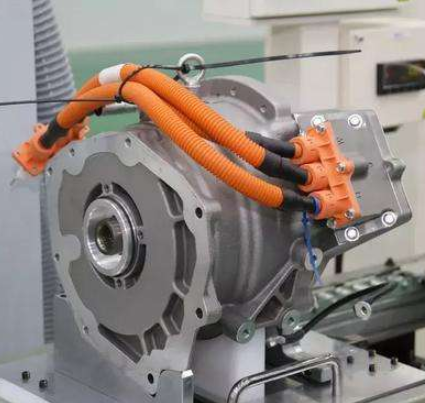Comprehensive understanding of new energy vehicle motors
Date:2019-07-26 origin:RCCN Visit:6053
Electric vehicle motor status
The electronic control system is the brain of the electric vehicle, which directs the operation of the electronic components of the electric vehicle. The in-vehicle energy system is the core technology in the electronic control system. It is a link between the battery and the battery pack and the whole vehicle system, including the battery. Management technology, on-board charging technology and DCDC technology and energy system bus technology. Therefore, in-vehicle energy system technology has increasingly become an important direction of industrial application technology research, and it has increasingly become an important symbol of industrial development. At present, this technology has become an important bottleneck restricting the connection and development of the electric vehicle industry chain.
Industrial transformation of electric vehicle motor
Electric vehicles have shown signs of transformation from research and development to industrialization. The core automobile manufacturers and core components manufacturers such as power storage batteries, drive motors and controllers have grown and expanded in several years of promotion and demonstration work, and launched a series of products that meet performance requirements. . However, as a key component technology of key technologies, such as drive motor and battery, the main indicators such as reliability, cost and durability can not meet the needs of electric vehicle development, and become the main constraint factor for the development of electric vehicles.
Difficulties in the development of electric vehicle motors
From the perspective of the electric vehicle industry chain, the beneficiary side may mainly concentrate on the core components, and the upstream resource side will benefit more from the companies with strong resource control.
The main reasons for R&D difficulties are as follows:
First: The battery is the biggest bottleneck in current electric vehicle technology and cost.
Second: due to the scarcity of mineral resources, lithium, nickel and other upstream resource companies will also have greater profit.
Third: OEMs are currently relatively cluttered and have no established monopoly leadership. They should first focus on those who have core technologies or have mature, commercially available models.
Electric vehicle motor requirements for the drive system
High voltage, small mass, large starting torque and large speed range, good starting performance and acceleration performance, high efficiency, low loss and high reliability. There are several key issues to consider when choosing an electric vehicle motor drive system: cost, reliability, efficiency, maintenance, durability, weight and size, noise, and more. The choice of motor type, power, torque, and speed is included in the selection of the motor for a pure electric vehicle.
Electric vehicle motor classification
The motors used in electric vehicles now mainly include DC motors, AC induction motors, permanent magnet motors and switched reluctance motors.
1. Electric vehicle DC motor
Advantages: The starting acceleration is huge, the electromagnetic torque control characteristics are good, the speed adjustment is convenient, the control device is simple, and the cost is low.
Disadvantages: There is a mechanical commutator. When running under high speed and large load, there is spark on the surface of the commutator, so it is not suitable for the motor speed. Compared with other drive systems, it is at a disadvantage and has gradually been eliminated.
2. Electric vehicle AC induction motor
The stator of the AC induction motor is used to generate a magnetic field, and is composed of a stator core, a stator winding, an outer casing of the iron core, and a bearing supporting the rotor shaft. AC motors have the advantages of low price, maintenance, and small size, but the control of AC motors is more complicated. It has become the first choice for AC-driven electric vehicles.
3. Electric vehicle AC induction motor
Permanent magnet motors use permanent magnets to generate air gap magnetic flux. Permanent magnets replace the field coils in DC motors and the magnets of stators in induction motors. Permanent magnet synchronous motor has high efficiency, high moment inertia ratio and high energy density. Especially its low speed and high torque can meet the needs of vehicles traveling on complex and varied roads. It is a high performance and low carbon environment-friendly motor with rare earth permanent magnets. The emergence of materials is expected to compete with AC induction motors for the market. Especially in the small and medium power range, it has been widely used.
4, electric car switch reluctance motor
The switched reluctance motor stator and rotor are double salient pole structures in which ordinary silicon steel sheets are laminated.
Advantages: simple and reliable, wide adjustable speed range, high efficiency, flexible control and low cost.
Disadvantages: large torque fluctuations, high noise, position detectors, non-linear characteristics, etc. The application is limited.
The power performance of an electric vehicle has a direct relationship with the power of the electric vehicle. The higher the power, the better the acceleration performance and the maximum climbing ability of the electric vehicle, the better the quality, and the increase in the size of the motor. However, the motor can not work under high efficiency for a long time, which will reduce the utilization rate of the electric vehicle and reduce the mileage of the car.
In general, the rated power of the selected motor should meet the maximum speed of our car. The peak power of the motor must meet the requirements of the maximum grade and acceleration performance of the car. Calculate the power required by our motor according to the following formula.
The driving force of the vehicle is all from the on-board motor. The driving force required by the car is different under different working conditions. The motor can only output the torque. The required force of the vehicle under various working conditions is caused by the output torque of the motor passing through the drive train. The drive wheel pushes the vehicle forward in the form of torque. The torque required to drive the motor can be calculated from the driving force required by the vehicle.
The choice of motor speed is directly related to the speed of the car. Its maximum speed should meet the maximum speed requirements of the car.
How to test electric motor motor
The testing of new energy vehicle motors is particularly important, which is directly related to the running state of the car. Only the motor that meets the test of the relevant functional items can be qualified for such a difficult task. Xiaobian will tell you how to test.
1, the test of the motor drive system
The motor drive system is a pure electric vehicle that converts the DC bus voltage output from the battery into AC power and drives the motor with AC power, which is the core part of the electric vehicle.
2, battery charging system test
The battery charging system converts alternating current in a charging device such as an external charging post or a charging station into direct current, charges a battery in a pure electric vehicle, and stores the electric energy in the battery. The main function of the DC load power supply system is to convert the stable high-voltage power of the DC bus output from the battery in the electric vehicle into a low-voltage output to supply the low-voltage DC load in the vehicle.
3, DC voltage regulator system test
Because the voltage of the battery is often charged and discharged, the voltage across it is a voltage that floats within a certain range. It is necessary to stabilize the voltage in this range to a stable DC bus voltage for direct application or other voltage conversion.
Electric car use precautions
Although electric cars are not as imaginative as they are supposed to be, careful maintenance can make you feel better about the pleasure of green travel.
1, to avoid large current discharge
When the electric car starts, carries people, and goes uphill, try to avoid slamming and accelerating, forming an instantaneous large current discharge. Large current discharges tend to cause the formation of lead sulfate crystals, which impair the physical properties of the battery plates.
2, avoid plugging when charging
The 220 volt power plug or the charger output plug is loose, the contact surface is oxidized, etc., which will cause the plug to heat up. If the heating time is too long, the plug will be short-circuited or contact poor, damage the charger and the battery, and cause unnecessary loss to you. . Therefore, when the above situation is found, the oxide should be removed or the connector replaced.
3, regular inspection
In the course of use, if the mileage of the electric vehicle suddenly drops by a dozen kilometers in a short time, it is very likely that there is at least one battery in the battery pack. At this time, you should go to the sales center or the agent maintenance department to check, repair or match.
This will extend the life of the battery pack and save you money.
4. It is strictly forbidden to lose electricity when storing
The battery must not be in a deficient state when it is stored. The deficient state means that the battery is not charged in time after use.
When the battery is stored in a depleted state, sulfation is likely to occur, and the lead sulfate crystals adhere to the electrode plate, which may block the ion channel, resulting in insufficient charging and a decrease in battery capacity. The longer the idle state is idle, the more severe the battery is damaged. Therefore, when the battery is not in use, it should be replenished once a month, which can better maintain the health of the battery.
Related articles
-

Comprehensive understanding of new energy vehicle motors
Nowadays, the development of electric vehicles is getting faster and faster, and the research and development of electric motor motors has attracted everyone's attention, but there are very few people
-

One minute for you to fully understand the new energy car motor
In recent years, the state and relevant departments have vigorously advocated energy conservation and emission reduction. The launch of electric vehicles has attracted the attention of many auto and p
















 RCCN WeChat QrCode
RCCN WeChat QrCode Mobile WebSite
Mobile WebSite